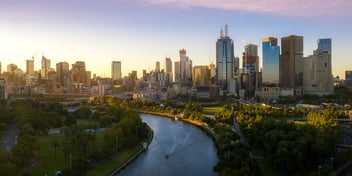What can we learn from Rotterdam’s approach to urban water management?
The ability of countries to address future urban water management challenges – particularly from climate change and population growth – demands a fundamental shift in policy and practice.
“There is widespread recognition that we need to transform the way we manage water in cities and take an integrated, multi-functional approach to water,” said Gemma Dunn, a PhD candidate at Monash University, who recently published a paper entitled “The role of science-policy interface in sustainable urban water transitions: Lessons from Rotterdam” in Environmental Science & Policy.
“The idea of integrated water management has been around since the 80s, but we are still finding it hard to implement.”
A challenge has been marrying new technology with systems that are still dominated by traditional ways of thinking, said Dunn.
Her research investigated why some cities have been more successful at transforming urban water management than others. She found that the science-policy interface was critical in facilitating change.
She defined the interface as the communication and learning processes within the fuzzy boundary between science and policy.
“Ultimately it’s about enriching decision-making by improving connections between scientists and policy makers, and shaping participants’ understanding of a problem and finding workable solutions,” she said.
She used Rotterdam as an example of a city effectively using the science-policy interface to implement more effective urban water management.
“Rotterdam is considered a frontrunner in terms of climate adaptation and integrated water resources management, so we wanted to understand how they became a global leader and identify enabling factors that other cities might potentially be able to adopt,” she said.
According to Dunn, Rotterdam’s science-policy interface comprises seven key enabling factors:
- compelling water narrative;
- cross-sectoral collaboration;
- co-production of knowledge;
- experiential evidence-based learning;
- strategic use of trusted scientists;
- fostering networks; and
- generating business from science-based outcomes.
Although each of these components is a crucial step in and of itself, Dunn said that how all seven interact is ultimately what determines a project’s success.
“Traditionally, water in cities is managed in silos, with a number of different departments each responsible for one area of water management,” she said.
“A key challenge is bringing different groups and expertise together to get them collaborating effectively. Potentially, this means rethinking the entire water governance structure to enable more effective integration.”
In the short-term, water managers, urban planners and various other stakeholders in Rotterdam addressed this issue by collaborating on a number of multi-functional water projects.
One example is the Benthenplein, a water plaza that, during dry times, serves as a community space complete with sunken basketball courts, amphitheatre seating and a skate park. When the rains come it can flood and retain water, and then slowly release that water to prevent overwhelming drainage systems.
Dunn said Rotterdam has had to take a gradual approach to transforming the way water is managed in the city.
“Financing is difficult and budgets are tight; one way Rotterdam is tackling this is by mapping out all its infrastructure,” she said.
“They have an understanding of what needs replacing next so when the time comes it can be replaced by multi-functional infrastructure as opposed to like-for-like infrastructure.”
For Australian cities to accomplish something similar, Dunn said there needs to be continued investment in science, research and evidence-based learning, as well as more focus on public water literacy.
“It’s hard to keep water on the agenda,” Dunn said.
When not in drought, water is often ‘out of sight, out of mind’, she said. But municipalities, utilities, developers, not-for-profits, research institutions, government bodies and the public should adjust their attitude in favour of an ‘in sight, in mind’ relationship to water to keep it on the agenda.
“Increased dialogue about and understanding of how our daily actions affect our local water resources will yield a change in people’s behaviours,” Dunn said.
“The science-policy interface is just one part of the puzzle. We all have a collective responsibility for water, and politicians have been shown to respond to public issues and community concerns. The media also has a role to play, and could investigate and promote stories that help the public understand the benefits of a more integrated approach.”
Related video:
https://www.youtube.com/watch?v=gnC940uJh84&t=32s


